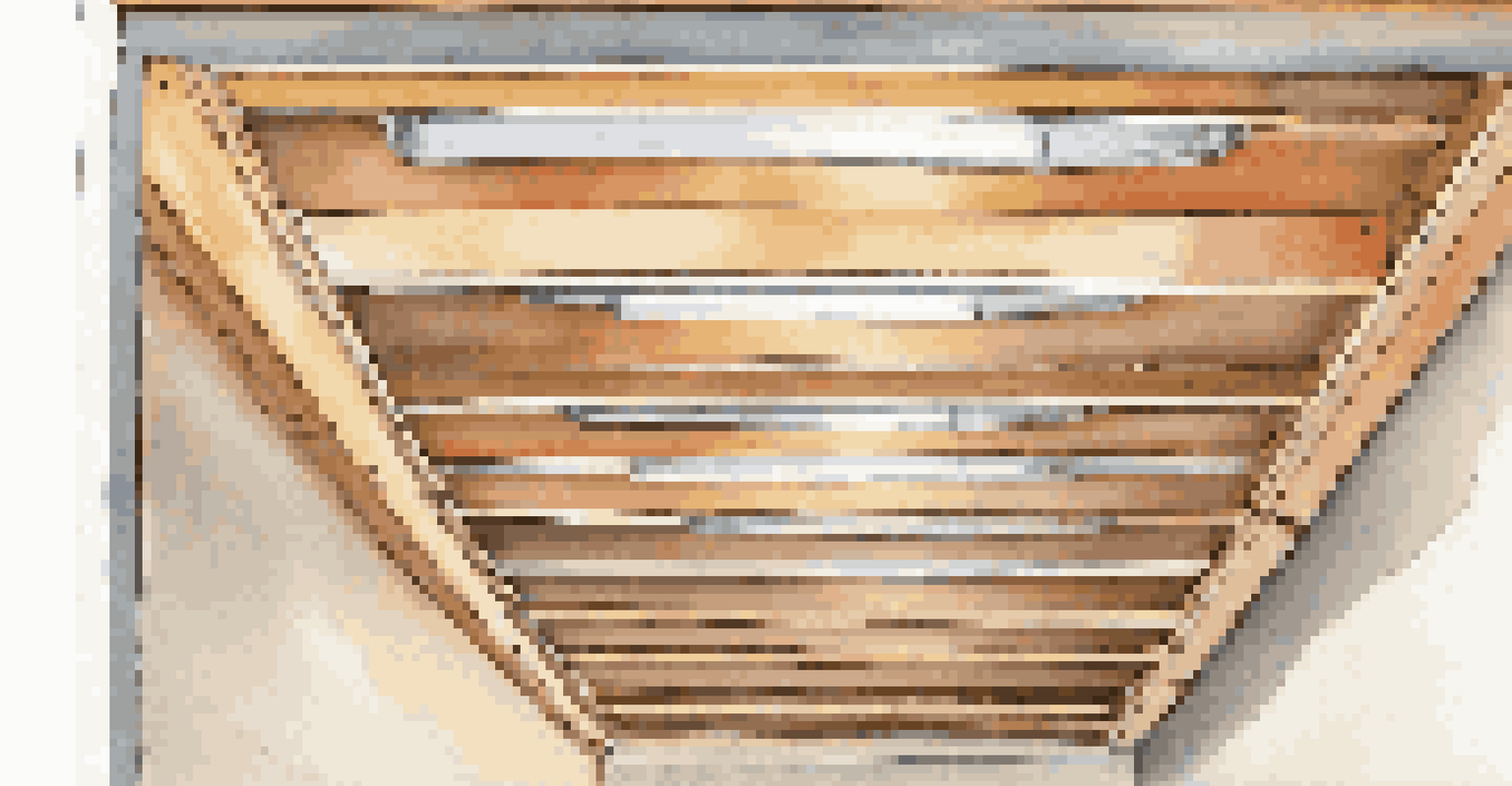How to Create an Energy-Efficient Attic Space

Understanding the Importance of an Energy-Efficient Attic
An energy-efficient attic is essential for maintaining a comfortable home and reducing energy bills. With proper insulation and ventilation, your attic can prevent heat loss in winter and keep your home cool in the summer. This not only enhances your living conditions but also contributes to a greener planet by conserving energy.
Energy efficiency is not just a goal; it's a responsibility we have towards our planet and future generations.
Think of your attic as a protective layer for your home. Just like a well-insulated jacket keeps you warm in winter, a well-insulated attic helps regulate your home's temperature. Investing in energy efficiency means you're investing in comfort and sustainability.
By improving your attic’s energy efficiency, you can also increase your property value. Homebuyers today often prioritize energy-efficient features, making your home more attractive in a competitive market.
Assessing Your Current Attic Insulation
Before making changes, it's crucial to assess your existing attic insulation. Check if it's in good condition and whether it meets the recommended R-value for your climate zone. The R-value measures insulation's effectiveness, so knowing this can guide your next steps.

A simple way to check insulation is to poke around and see if it’s compacted or damaged. If you can see the rafters or if there are gaps, it's time for an upgrade. Remember, insulation that’s too thin is like a leaky faucet—wasting energy and money.
Energy Efficiency Boosts Comfort
An energy-efficient attic helps maintain a comfortable home temperature while reducing energy bills.
Consider hiring a professional for an energy audit, which can provide you with a comprehensive overview of your attic's insulation needs. This expert insight can save you time and ensure you're making the right improvements.
Choosing the Right Insulation Material
When it comes to insulation materials, there are several options to consider—fiberglass, cellulose, or spray foam, each with its own benefits. Fiberglass is common and cost-effective, while cellulose is made from recycled materials, making it an eco-friendly choice.
The most effective way to reduce energy consumption is to improve the efficiency of our homes.
Spray foam insulation, on the other hand, expands upon application, sealing gaps and cracks effectively. It's ideal for hard-to-reach areas but can be more expensive. Weighing the pros and cons of each material can help you find the best fit for your attic.
Ultimately, the right insulation material will depend on your budget, climate, and specific needs. Don’t hesitate to consult with a professional for recommendations tailored to your home.
Enhancing Attic Ventilation for Efficiency
Proper ventilation is just as important as insulation in an energy-efficient attic. It helps regulate temperature and prevents moisture buildup, which can lead to mold and other issues. Think of ventilation as the lungs of your attic, promoting air circulation.
Common ventilation options include soffit vents, ridge vents, and gable vents. These allow hot air to escape while drawing in cooler air, creating a balanced environment. Installing these vents can greatly improve your attic's energy efficiency.
Proper Insulation is Essential
Assessing and upgrading your attic insulation can significantly improve energy efficiency and property value.
If you're unsure about your attic's ventilation, check for signs like excessive heat or condensation. Improving ventilation can often lead to a more comfortable living space and lower energy costs.
Air Sealing: A Critical Step in Energy Efficiency
Air sealing is a crucial step in creating an energy-efficient attic. It involves identifying and sealing gaps, cracks, and holes where air can escape or enter. This is like patching holes in a boat to keep it afloat—every small fix adds up.
Common areas that need sealing include around ducts, plumbing vents, and electrical outlets. Using caulk or spray foam can effectively block unwanted airflow. Taking the time to seal these leaks can significantly enhance your attic’s performance.
Not only does air sealing improve energy efficiency, but it also enhances indoor air quality by preventing dust and allergens from entering your living space. It’s a win-win situation for both comfort and health.
Investing in Energy-Efficient Attic Windows
If your attic has windows, consider upgrading them to energy-efficient models. Energy-efficient windows reduce heat transfer, keeping your attic cooler in summer and warmer in winter. Look for double or triple-pane glass options that provide better insulation.
Additionally, consider window films or shades that can further enhance energy efficiency. These can significantly reduce glare and heat gain while maintaining natural light. Remember, windows are often overlooked but can play a big role in your attic’s energy efficiency.
Ventilation Prevents Moisture Issues
Enhancing attic ventilation is crucial for regulating temperature and preventing moisture buildup, which can lead to mold.
Making these upgrades not only improves energy efficiency but also enhances the overall aesthetic of your attic. It’s an opportunity to create a bright, inviting space while being kind to your wallet.
Maintaining Your Energy-Efficient Attic Space
Creating an energy-efficient attic is just the first step; regular maintenance is key to keeping it that way. Schedule periodic inspections to check insulation, ventilation, and sealing. This proactive approach can help catch any issues before they become costly repairs.
Keep an eye on your energy bills, too. If you notice a sudden spike, it might be a sign that something in your attic needs attention. Maintaining efficiency not only preserves your investment but also ensures your home stays comfortable year-round.

By treating your attic with the care it deserves, you can enjoy long-term benefits, including lower energy costs and a healthier living space. Regular maintenance is an investment in your home’s future.